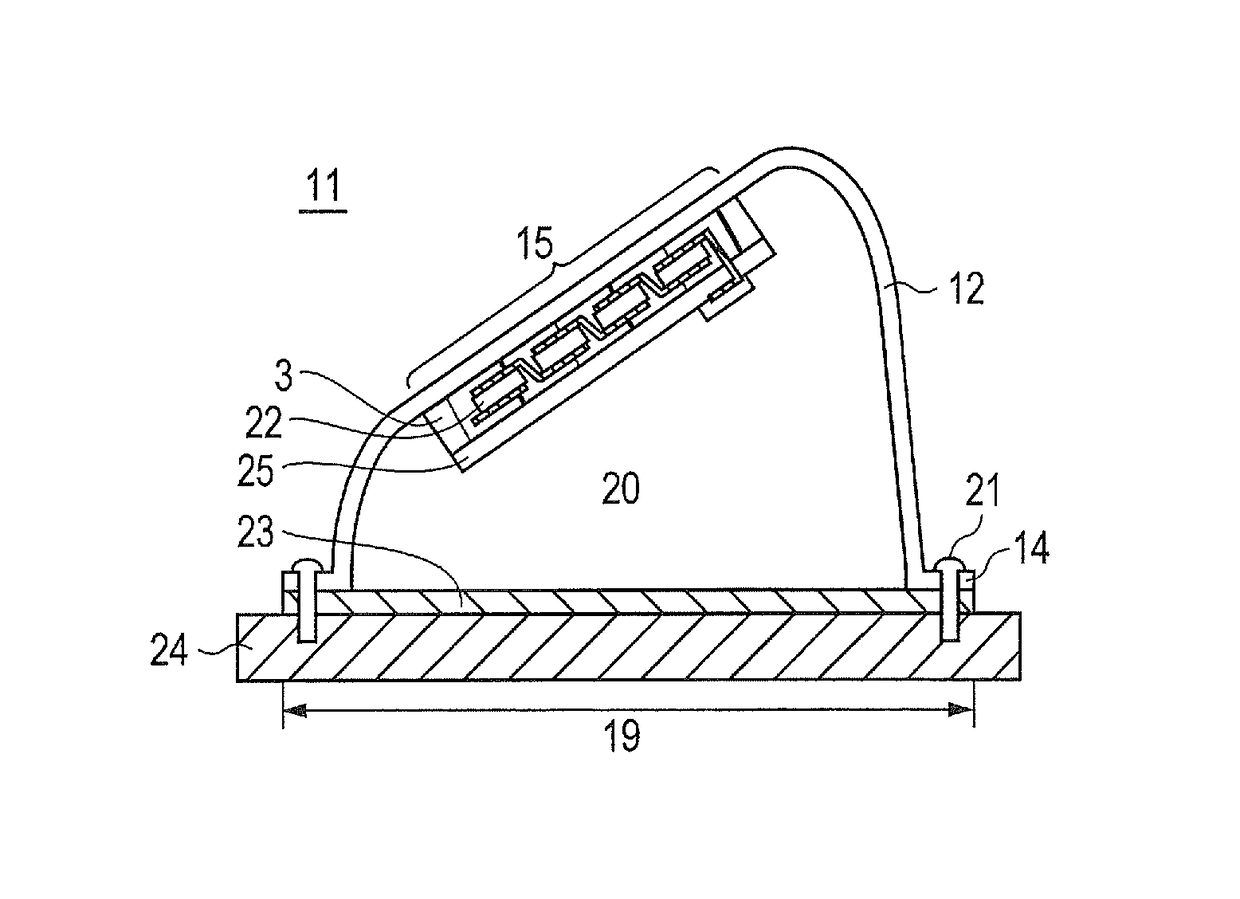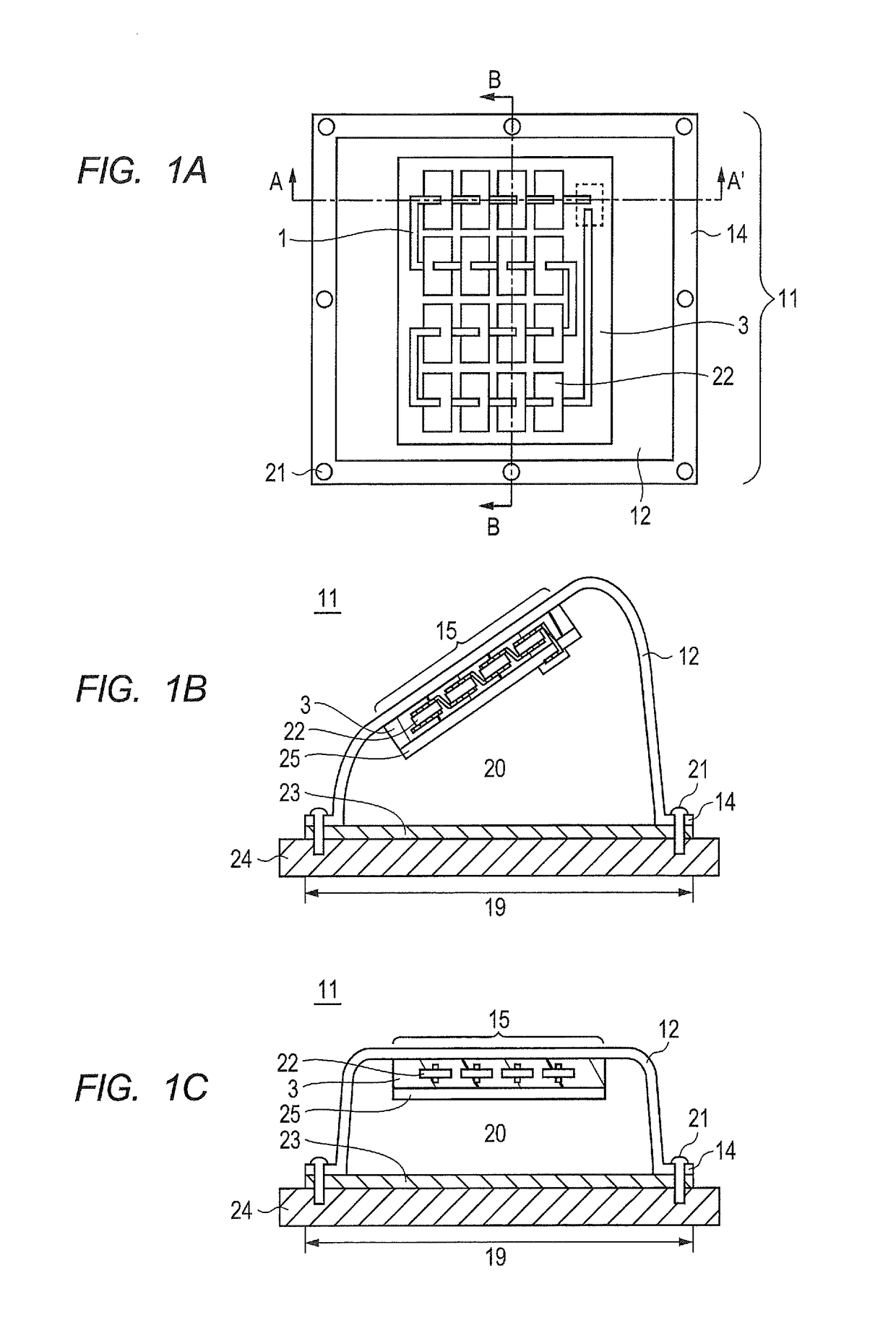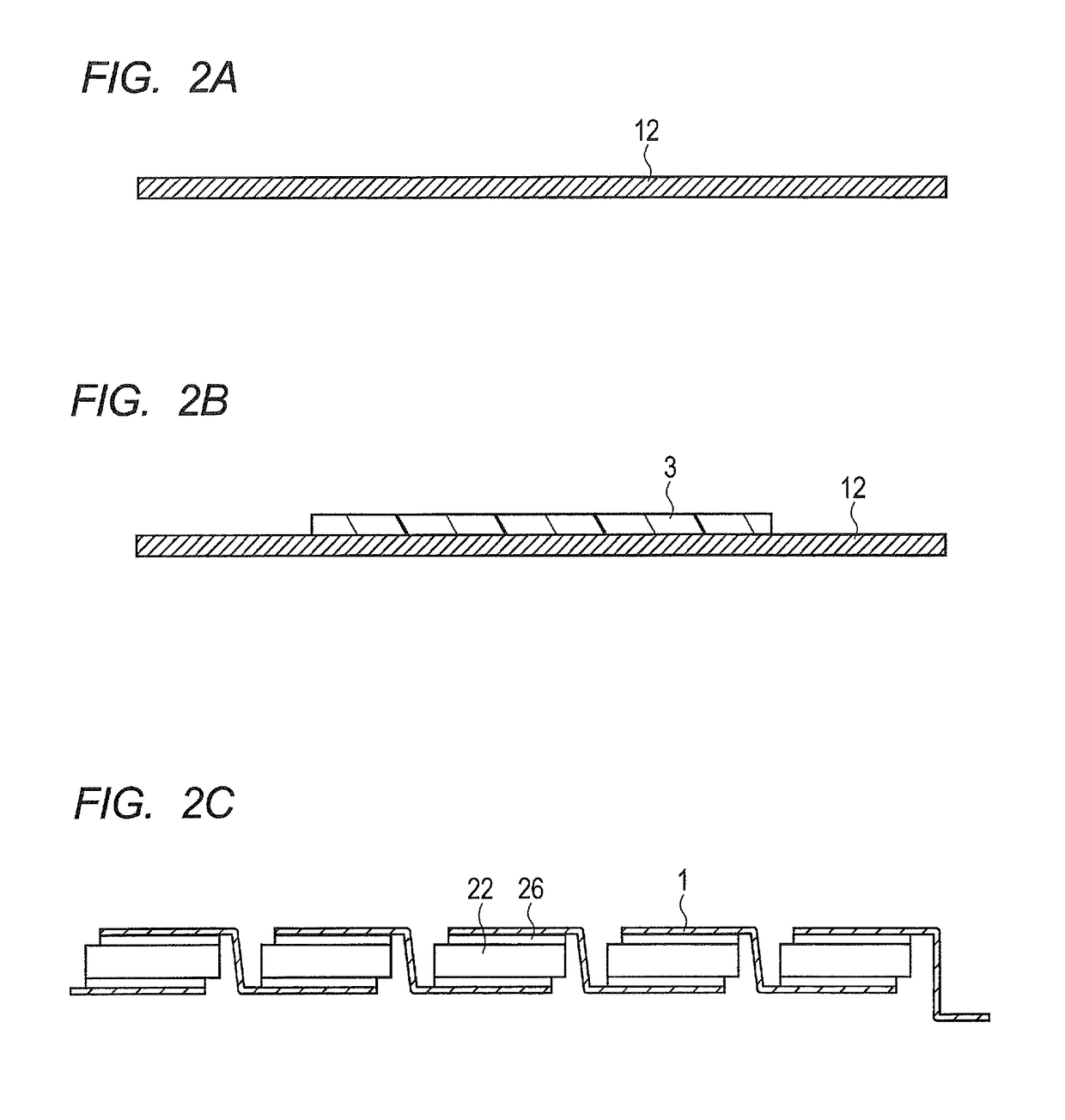Solar cell apparatus and method for manufacturing same
a solar cell and apparatus technology, applied in photovoltaic supports, pv power plants, sustainable buildings, etc., can solve the problems of inability to bring the solar cell unit into close contact with the portion to be installed, inability to achieve the effect of reducing the light reflectivity, not easily stained, and increasing the power generation of the solar cell uni
- Summary
- Abstract
- Description
- Claims
- Application Information
AI Technical Summary
Benefits of technology
Problems solved by technology
Method used
Image
Examples
embodiment 1
[0049][Embodiment 1]
[0050]FIGS. 1A to 1C are a top view (FIG. 1A) and sectional views (FIG. 1B (A-A sectional view in FIG. 1A) and FIG. 1C (B-B sectional view in FIG. 1A)) of the solar cell device of Embodiment 1. Solar cell device 11 illustrated in FIGS. 1A to 1C includes a plurality of double-sided light-receiving solar cell units 22. Solar cell units 22 adjacent to each other are electrically connected in series by electrically connecting a light-receiving electrode on the front side of one solar cell unit 22 to a light-receiving electrode on the rear side of the other solar cell unit 22 through interconnector 1. In addition, solar cell device 11 illustrated in FIGS. 1A to 1C includes transparent filling resin 3 that surrounds a plurality of solar cell units 22.
[0051]Further, solar cell device 11 illustrated in FIGS. 1A to 1C includes translucent plastic material 12 disposed on the light-receiving surface side of a plurality of solar cell units 22 that perform double-sided power ...
embodiment 2
[0111][Embodiment 2]
[0112]FIG. 7 illustrates a solar cell device of Embodiment 2. The solar cell device of Embodiment 2 has concave curved surface 12a being concave with respect to the outer space, at a portion other than sealing area 15 (side surface portion) of translucent plastic material 12 of solar cell unit 22. Providing concave curved surface 12a at the side surface portion enables the area of installing area 19 to be smaller than the area of sealing area 15 for solar cell unit 22. When the area of installing area 19 is set smaller, it becomes possible to increase ratio of the area of sealing area 15 for solar cell unit 22 to the area of fixing target 24. As a result, the efficiency in installing the solar cell device is enhanced.
[0113]In addition, providing concave curved surface 12a at the side surface portion of translucent plastic material 12 allows the incident angle of sunlight 37 reflected at the surface of fixing target 24 outside installing area 19 into the side surf...
embodiment 3
[0114][Embodiment 3]
[0115]FIG. 8 illustrates a solar cell device of Embodiment 3. The solar cell device of Embodiment 3 has convex curved surface 12b being convex with respect to the outer space, at the surface of sealing area 15 of translucent plastic material 12 for solar cell unit 22. Providing convex curved surface 12b at sealing area 15 for solar cell unit 22 allows the rigidity of the solar cell device to be enhanced. In addition, it is also possible to bring the incident angle of sunlight into the surface of sealing area 15 for solar cell unit 22 closer to right angle by adjusting the surface angle of convex curved surface 12b. Thus, in spite of the change in the altitude of the sun throughout a year and of the movement of the sun throughout a day, it is possible to constantly reduce the reflectance on the surface of sealing area 15 for solar cell unit 22, and thus to increase the amount of power generation of solar cell unit 22.
[0116]In the same manner as the solar cell devi...
PUM
 Login to View More
Login to View More Abstract
Description
Claims
Application Information
 Login to View More
Login to View More - R&D
- Intellectual Property
- Life Sciences
- Materials
- Tech Scout
- Unparalleled Data Quality
- Higher Quality Content
- 60% Fewer Hallucinations
Browse by: Latest US Patents, China's latest patents, Technical Efficacy Thesaurus, Application Domain, Technology Topic, Popular Technical Reports.
© 2025 PatSnap. All rights reserved.Legal|Privacy policy|Modern Slavery Act Transparency Statement|Sitemap|About US| Contact US: help@patsnap.com



